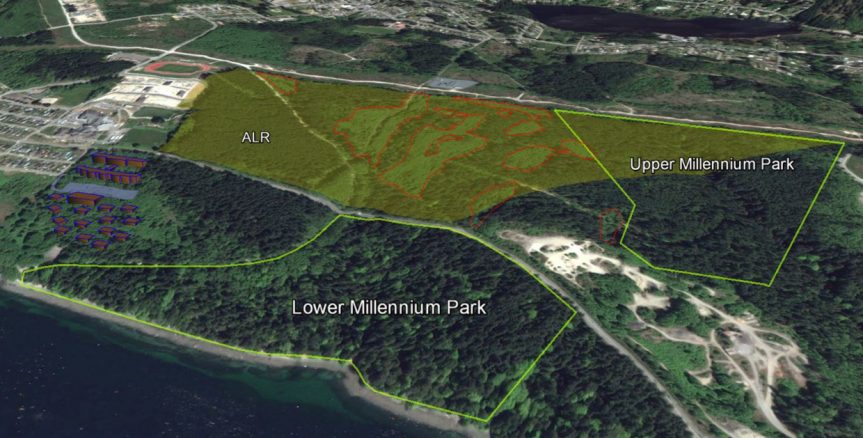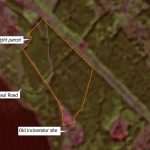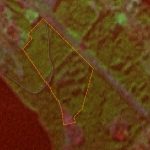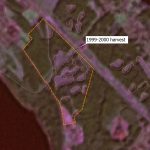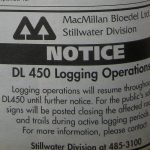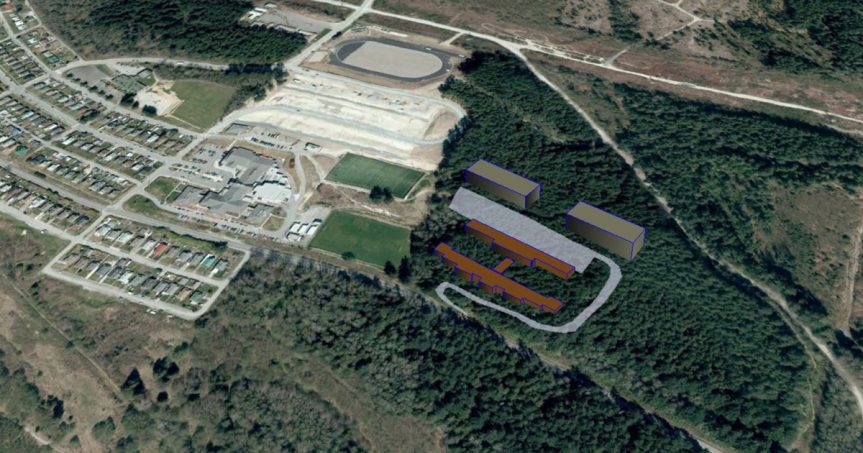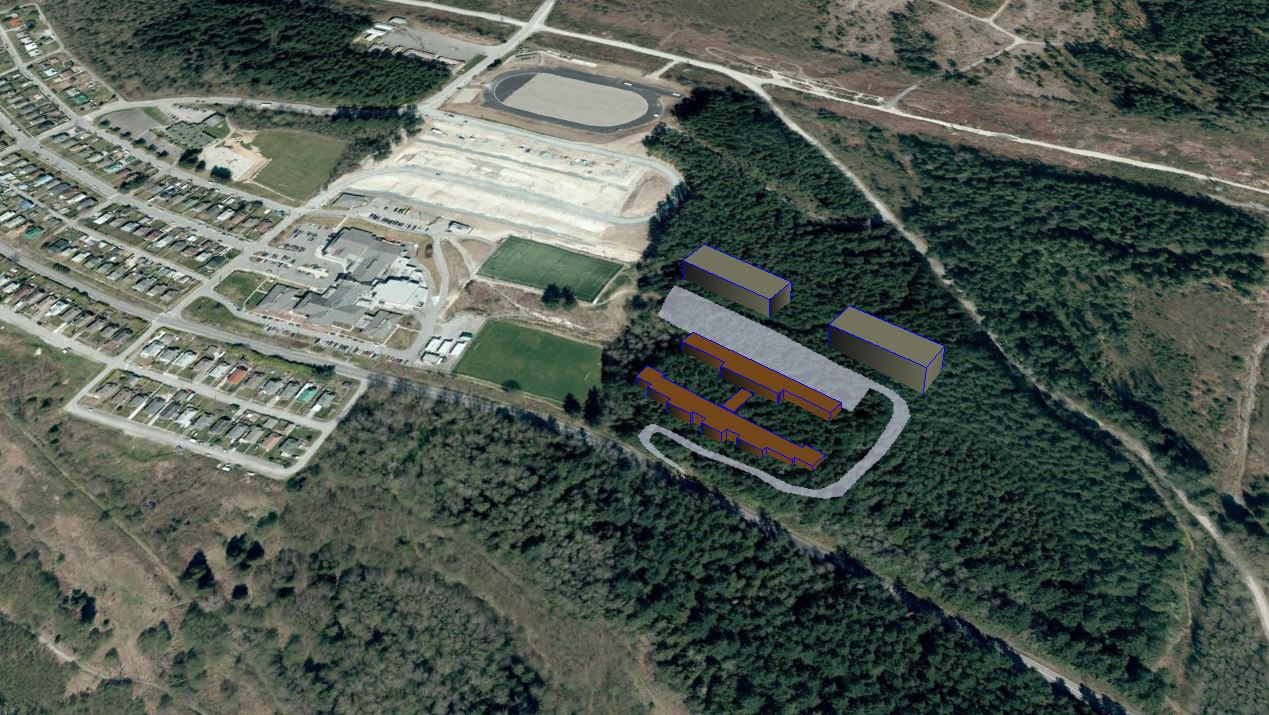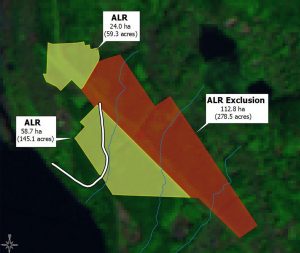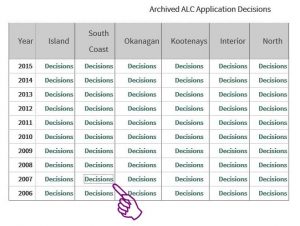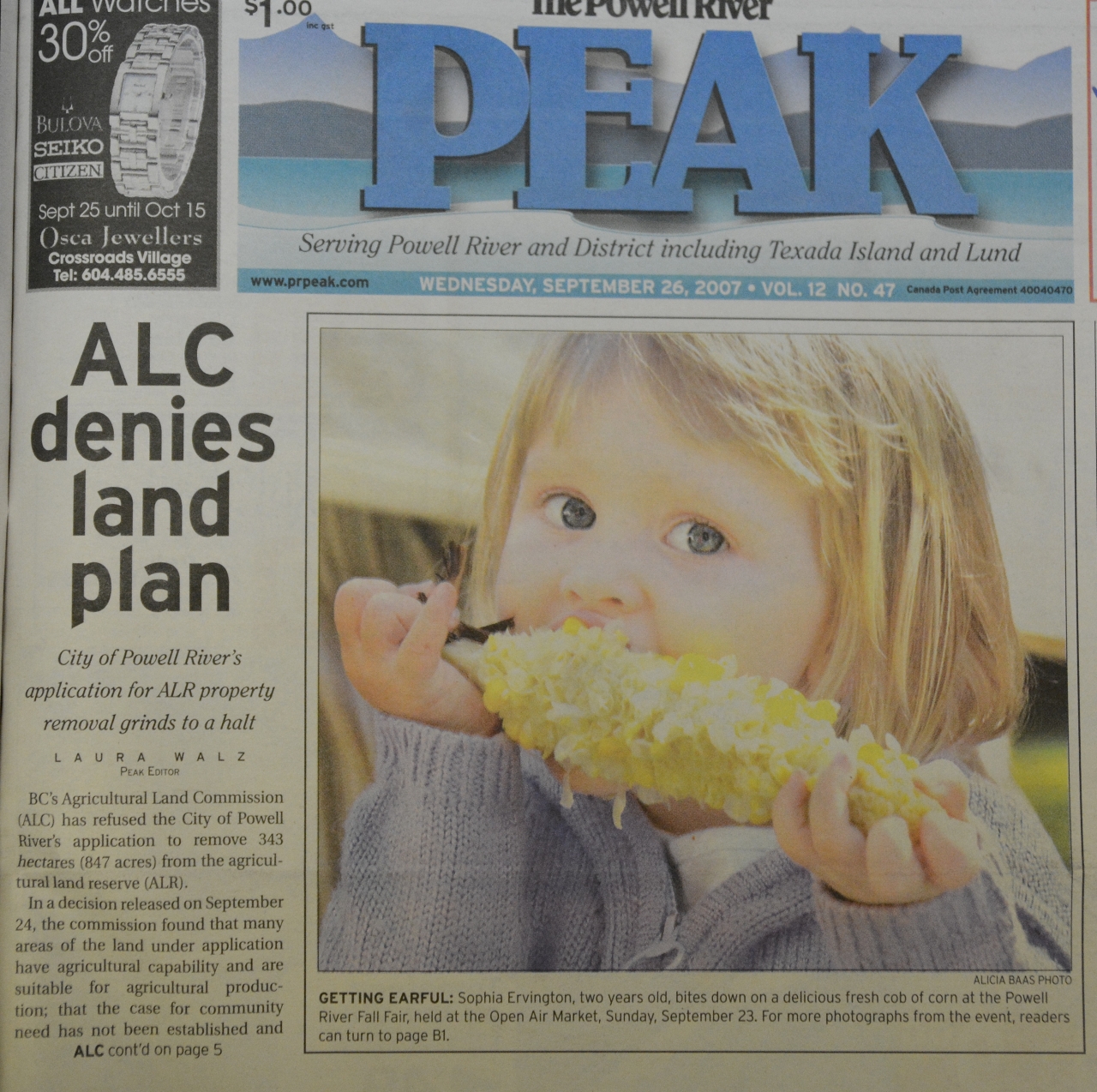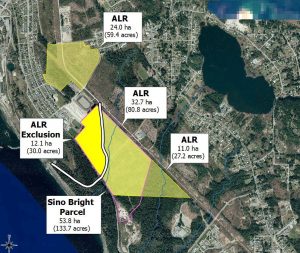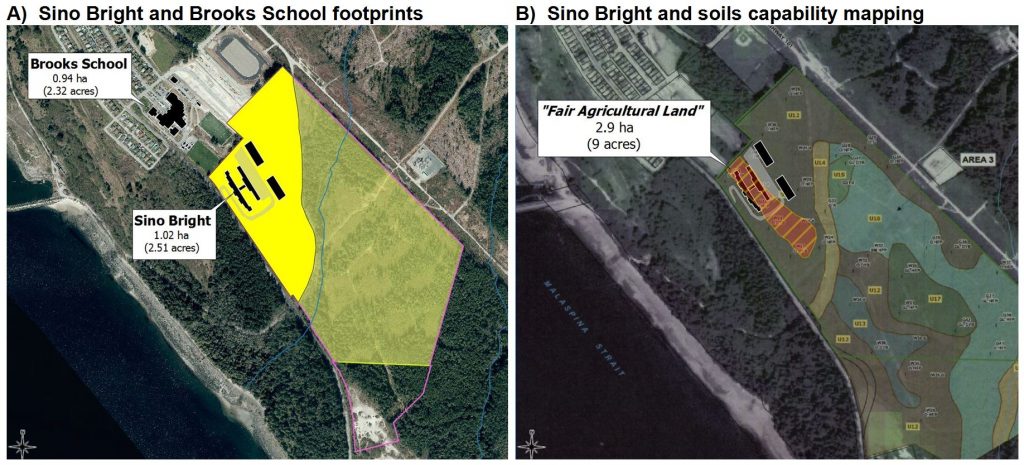
With ALR exclusion off the table, maybe it’s time to re-think what the “Green Heart of Powell River” could be – if the trees don’t have to come down.
This image shows the ALR surrounded by upper and lower Millenium Park – it also shows the areas harvested in 1999-2000 – and what Sino Bright could look like if re-positioned on the old golf course.
State of denial
The recent Land Commission decision to deny exclusion of ALR lands came as a shock to some – which puzzles me.
Given events in 1994 and 2006, Powell River has a history of asking for ALR exclusions on the basis of “community need” – and then not providing a very compelling case for them.
The ALC decision is available here. Briefly, it says a) there is some modest agricultural potential on the land, and b) there was no detailed analysis of other potential locations.
In essence the ALC asked, as others have (e.g., here, here and here); why did Sino Bright School have to be built on the ALR? Their decision is admirably brief:
“The Panel finds that the Proposal would be more appropriately located on lands outside of the ALR.”
I agree. And I really, really hope that the PRSC, VIU, School District 47 and Sino Bright were far-sighted enough to have envisioned the need for a Plan B.
Background
Elsewhere I’ve described the history of what I call the “Sino Bright parcel” and other PRSC lands, much of which was shaped by MacMillan Bloedel’s subdivision in 1998.
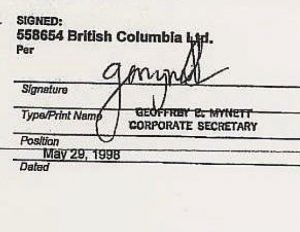
Click to read the full licence.
To recap, one branch became the pulp and paper division (558654 BC Ltd), while the other kept the M&B name and forestry operations. Thus we have the amusing case of one person signing both sides of a contract, in which the Licensor (558654 BC Ltd) granted one-time rights to the Licensee (M&B) to “harvest and remove the timber growing on the land as of May 31st 1998.”
There’s nothing untoward about this – it was a simple corporate restructuring. Nor is it odd that the licence was renewed a year later, when 558654 BC Ltd became Pacifica Papers. What was, I think, utterly unexpected was the takeover of M&B by Weyerhaeuser, four months later, in November of 1999.
Here’s where it became interesting to me, in light of the wording of the 1998 licence and the 1999 affirmation that:
“Licence terminates upon harvesting of timber in accordance with harvesting agreement between Pacifica and MB”
The satellite imagery is unambiguous. Logging of the Sino Bright parcel and adjacent properties began in October of 1999 (under MacMillan Bloedel) and continued until April of 2000 (under Weyerhaeuser). About 25% of the trees were harvested. From the best soils on the property.
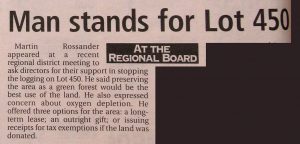
Powell River Peak, Dec 16, 1999
The takeover didn’t change much on the ground. It was the same loggers, the same trucks and chainsaws, that started and finished the job. There was no real difference – it was the same forestry operation – only with a different corporate address.
As always, the Peak dutifully recorded these changes. There wasn’t much public outcry – but there was some.
Powell River Peak, Sept 18, 1999
Powell River Peak, Oct 23, 1999
Powell River Peak, Dec 18, 1999
The legal question
In August of 2016 I was encouraged to contact one Andrew Gage, a lawyer with West Coast Environmental Law. As is my nature, I supplied him with far more data that he probably expected. In turn he agreed to study the issue and form an opinion. Further, he agreed to write a letter on my behalf if he thought the situation had legal merit.
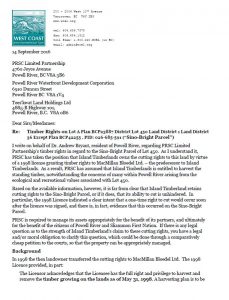
Here’s Mr. Gage’s letter. It was mailed on 14 Sept 2016 along with Exhibit A, which illustrates the same cut-blocks shown above.
According to the 1998 licence, there should have been a “mutually agreed-to harvest plan” prior to any trees coming down. Trees came down, so I think it’s reasonable to assume that there was some kind of a harvest plan.
The licence also states: “Any remaining timber not harvested by the Licensee at this time will belong to the Licensor.”
I think the key issue raised here is: at what point are “partly-exercised” rights conferred by a licence considered to be “expired”?
The opportunity
Andrew Gage’s central point is that a “proceeding brought by petition” under BC Supreme Court Civil Rules could be a relatively inexpensive means of clarifying the question of “who owns the trees?” And that PRSC Limited Partnership Ltd, and by extension its two shareholders, have a moral, legal and fiduciary responsibility to do so.
His letter even outlined the necessary “next-steps”.
BC Supreme Court Civil Rule 2-1(2)(c) applies when
the sole or principal question at issue is alleged to be one of construction of an enactment, will, deed, oral or written contract or other document;
BC Supreme Court Civil Rule 2-1(2)(g) relates to land and seeks
(ii) a declaration that settles the priority between interests or charges,
The ramifications
I confess to having become excited by the possibilities that the foregoing raised.
- What if the ALC denied the application for exclusion, and the Sino Bright land sale fell through as a result?
- What if a Supreme Court Judge were to rule that yes, the evidence is that one-time harvest rights were exercised, and rights to the remaining timber reverted to the Licensor, and are therefore not held by Island Timberlands?
- What if it turned out that a substantial chunk of forested land – bordered by upper and lower Millennium Parks, a soon-to-be rehabilitated incinerator site, and Brooks Secondary School – didn’t automatically have to be clearcut?
Once upon a time I did a radio interview in which I described myself, and this website, as being “unimaginative”. Well, here goes. I’m calling it Plan C. Whaddya think?
Accordingly, in September I followed up with a few phone calls – followed by individual emails to the Mayor and City Councilors in October.
I’m still waiting to hear back…

